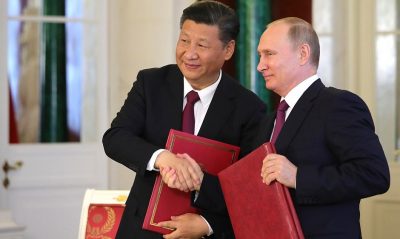Russia-India China (RIC) on “Indo-Pacific”: Resolving Strategic Problems. India’s Military Alliance with the U.S. Remains an Impediment

The upcoming meeting that Russian, Indian, and Chinese (RIC) authorities plan to hold on the “Indo-Pacific” will help each Great Power find common ground on this originally US-envisaged concept in an attempt to sort out their strategic problems and regain the trust that was lost when New Delhi decisively pivoted towards Washington in recent years.
Indian media reported that authorities from Russia, their country, and China (RIC) plan to hold an upcoming meeting on the “Indo-Pacific”, which could interestingly provide the chance for a breakthrough in sorting out their strategic problems. This originally US-envisaged concept is commonly understood as a euphemism for using India to “contain” China, a role which New Delhi has eagerly agreed to play much to the concern of its “fellow” BRICS and SCO partners, but the forthcoming get-together will give its decision makers the opportunity to try to explain themselves before their counterparts and convince them that its alliance with Washington isn’t aimed against Beijing. It’s extremely unlikely that the Russians and Chinese will be swayed by anything that the Indians say, but they might go along with it if their South Asian partners propose a profitable way for them all to multilaterally cooperate in this broader region.
For example, the promise of large-scale Indian investments in Russia’s Far East (which is expected to figure prominently on the agenda during Modi’s trip to Vladivostok in September to attend the Eastern Economic Forum) and visible progress on the stalled Bangladesh-China-India-Myanmar (BCIM) Economic Corridor could placate each respective Great Power for the time being and be paired with joint economic initiatives in Africa in order to “sweeten the deal”. That might be enough to prevent Lavrov from once again publicly criticizing the “Indo-Pacific” as an “artificially imposed” pro-American concept, which could allay the Alt-Media Community‘s fears for a bit about India’s newfound reorientation towards the West if they saw Russia openly participating in this venture and receiving veritable benefits from it. Furthermore, China would be pleased to pioneer its long-sought connectivity corridor with India via the BCIM, which could tie the two Great Powers closer together.
Even in the event that the “best-case” scenario transpires, that still won’t be enough to regain the trust that was lost since India began its pro-American pivot unless New Delhi commits to ceasing its Hybrid War on CPEC, the flagship project of China’s Belt & Road Initiative (BRI) that’s hosted by the global pivot state of Pakistan. That probably won’t happen anytime soon, however, since India regards this campaign as an issue of premier national security importance, but any further attempts to destabilize Pakistan will have a negative impact on Chinese and Russian interests due to their respective stakes in CPEC and N-CPEC+. As such, this means that while superficial and possibly very profitable progress might eventually be made as a result of RIC’s “Indo-Pacific” powwow, the core issues of India’s military-strategic alliance with the US to “contain” China and its attendant Hybrid War on CPEC will still remain as a serious impediment to further multipolar integration.
*
Note to readers: please click the share buttons above or below. Forward this article to your email lists. Crosspost on your blog site, internet forums. etc.
This article was originally published on Eurasia Future.
Andrew Korybko is an American Moscow-based political analyst specializing in the relationship between the US strategy in Afro-Eurasia, China’s One Belt One Road global vision of New Silk Road connectivity, and Hybrid Warfare. He is a frequent contributor to Global Research.
Featured image is from Strategic Culture Foundation

